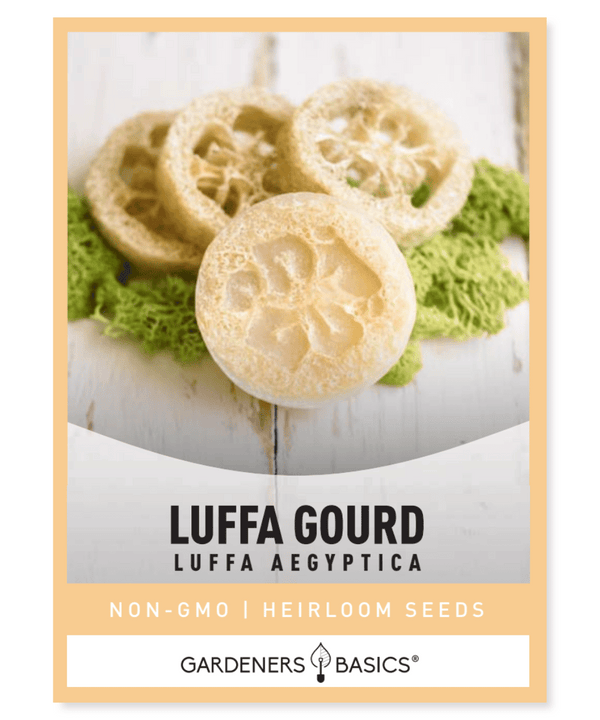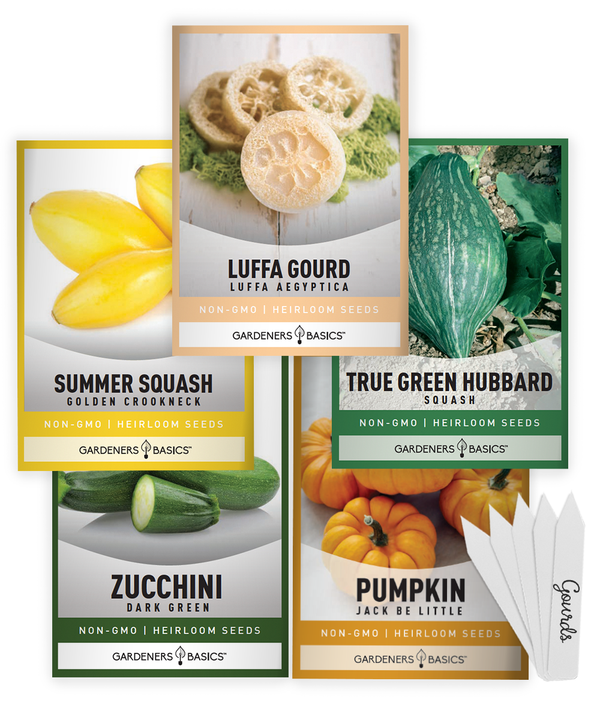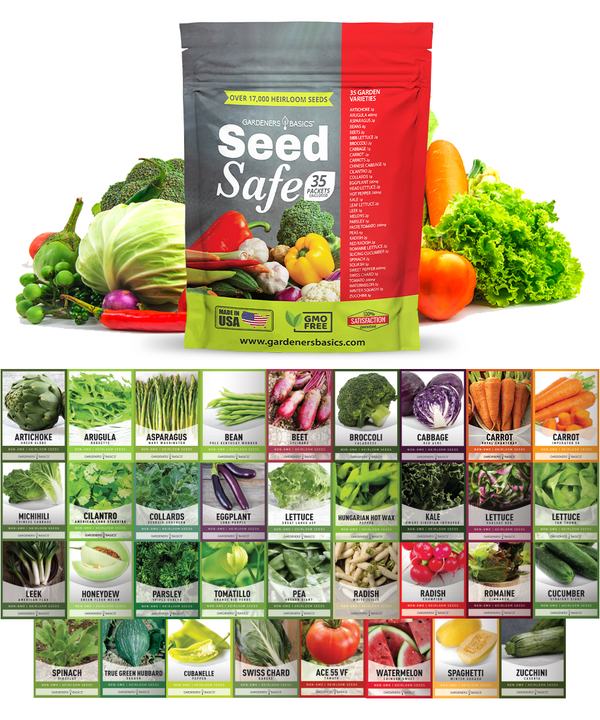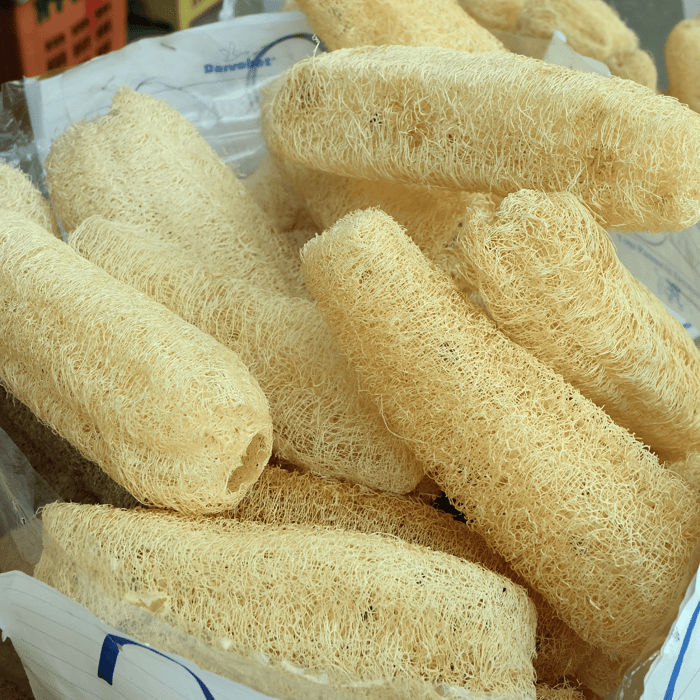Luffa, also known as sponge gourd, is a unique and versatile vegetable that is commonly grown in tropical and subtropical regions. When harvested at the right time, the luffa fruit can be dried and turned into a natural sponge, perfect for exfoliating and cleaning. In this article, we will cover everything you need to know about growing luffa.
What are Luffa Seeds?
Luffa plant seeds are the seeds of the luffa plant, which is a member of the Cucurbitaceae family. The seeds are flat, round, and covered in a thin, papery coating. Luffa seeds can be purchased from a seed supplier or harvested from mature luffa fruit.
Choosing the Right Luffa Variety
There are two main types of luffa plants: Luffa aegyptiaca and Luffa acutangula. Luffa aegyptiaca is the most commonly grown variety and is used for making natural sponges. Luffa acutangula is primarily used for cooking and is known for its tender, flavorful flesh. When choosing a luffa variety, consider your intended use for the fruit.
Luffa Gourd Seeds

$2.49
Luffa Gourd Seeds – Heirloom, Non-GMO, Non-Hybrid, Open-Pollinated Grow your own natural sponges and add a unique touch to your garden with our premium Luffa Gourd Seeds! Perfect for gardeners who love multifunctional plants, these heirloom seeds are non-GMO, non-hybrid,… read more
Sowing Luffa Seeds
Luffa plants require a long growing season, so it's best to start the loofah seeds indoors 4-6 weeks before the last frost date in your area. Here's how to sow luffa seeds:
- Fill a seed tray with seed-starting soil.
- Place one or two seeds in each cell, about 1/2 inch deep.
- Cover the seeds with a thin layer of soil and water lightly.
- Cover the tray with plastic wrap to retain moisture and place it in a warm, sunny location.
- Once the seedlings have grown to about 3 inches tall, they can be transplanted into the garden.
Planting Luffa Plants
Luffa plants require full sun and fertile, well-draining soil. Here's how to plant luffa plants:
- Choose a location that receives full sun and has well-draining soil.
- Prepare the soil by adding compost or well-rotted manure to improve fertility and drainage.
- Dig a hole that is twice the size of the seedling's root ball, and plant the seedling so that it is level with the soil surface.
- Backfill the hole with soil, firming it gently around the base of the plant.
- Water the seedling deeply and mulch around the base to help retain moisture.
Luffa plants can grow quite large, so make sure to give them plenty of space to spread out. Plant them about 6 feet apart in rows that are at least 8 feet apart. Providing support for the plants to climb, such as a trellis or fence, will help them grow more efficiently and produce more fruit.
Gourd & Pumpkin Seeds | 5 Variety Pack

$9.95
5 Gourd & Pumpkin Seeds Variety Pack: Non-Hybrid, Heirloom, and Non-GMO Seeds Introducing our 5 Gourd & Pumpkin Seeds Variety Pack, an incredible selection of heirloom seeds perfect for gardeners looking to grow beautiful and unique gourds and pumpkins. These… read more
Caring for Luffa Plants
Luffa plants require regular watering and fertilization. Here are some tips for caring for luffa plants:
- Water the plants deeply once a week, providing about 1 inch of water.
- Feed the plants with a balanced fertilizer every 3-4 weeks.
- Watch out for cucumber beetles, which can damage plants by feeding on the leaves and transmitting diseases. Covering the plants with row covers or using an insecticidal soap can help control these pests.
- Remove any dead or diseased foliage promptly to prevent the spread of powdery mildew, which is a fungal disease that can affect many plants, including luffa. Applying a fungicide can also help control powdery mildew.
- Provide support for the plants to climb, such as a trellis or fence, and prune the vines regularly to encourage air circulation and prevent the growth of powdery mildew.
Harvesting Luffa Fruit
Luffa fruit is ready to harvest when it is about 6-8 inches long and the skin is still green. Here's how to harvest luffa fruit:
- Use a sharp knife to cut the fruit from the vine, making sure to leave a short stem attached.
- Rinse the fruit in cool water to remove any dirt or debris.
- Soak the fruit in a solution of 10% bleach and water for 15-20 minutes to remove any bacteria or mold.
- Rinse the fruit again in cool water and pat dry.
- Hang the fruit in a dry, well-ventilated area to dry for several weeks.
As the fruit dries, the skin will turn brown and harden. Once it is completely dry, the skin can be peeled away to reveal the natural sponge inside. If you notice any mold or mildew during the drying process, discard the fruit and start over with fresh ones.
Saving Luffa Seeds
If you want to save luffa seeds for next year's garden, simply remove the seeds from a mature luffa fruit and dry them on a sunny windowsill for several days. Store the seeds in a cool, dry place until it's time to sow them.
Using Luffa Sponges
Luffa sponges are a natural and eco-friendly alternative to synthetic sponges. They can be used for a variety of household cleaning tasks, such as washing dishes, cleaning countertops, and scrubbing floors. Here's how to use a luffa sponge:
- Wet the sponge with water and add a small amount of dish soap or cleaning solution.
- Scrub the surface you wish to clean, using a circular motion.
- Rinse the sponge thoroughly with water and squeeze out any excess moisture.
- Hang the sponge in a well-ventilated area to dry.
Common Problems with Luffa
Luffa plants are susceptible to several problems, including powdery mildew, cucumber beetles, and turning brown prematurely. Here are some solutions to these common problems:
Seed Safe Survival Seed Kit - 35 Variety Pack

$29.95
$49.95
Seed Safe Survival Seed Kit: The Ultimate Heirloom Collection for Self-Sufficient Gardening Introducing the Seed Safe - 35 Varieties of Heirloom Vegetable, Herb, and Fruit Seeds, the ultimate solution for gardeners who want to secure a bountiful future harvest. This… read more
Powdery Mildew
Powdery mildew is a fungal disease that affects many plants, including luffa. It appears as a white or gray powder on the leaves and stems of the plant. Here's how to treat powdery mildew on luffa plants:
- Remove any affected foliage.
- Treat the plant with a fungicide.
- Improve air circulation by thinning out the plants or providing a fan.
Cucumber Beetles
Cucumber beetles are a common pest of luffa plants. They feed on the leaves and stems of the plant, causing damage and transmitting diseases. Here's how to control cucumber beetles:
- Cover the plants with row covers to prevent beetles from laying eggs.
- Handpick beetles and drop them into a bucket of soapy water.
- Spray the plants with a neem oil-based insecticide.
Turning Brown Prematurely
If your luffa fruit is turning brown before it's fully grown, there could be several reasons. Here are some possible causes:
- Inadequate water or nutrients.
- Excessive heat or sun exposure.
- Pests or diseases.
To prevent premature browning, make sure your luffa plants are well-watered and fertilized, and provide them with shade during the hottest part of the day.
Fun Facts about Luffa
- The luffa plant is native to South Asia and has been cultivated for thousands of years for its many uses.
- The young fruits of the luffa plant can be eaten like zucchini or cucumber, while the mature fruits are used to make natural sponges.
- Luffa sponges were used by ancient Egyptians and Greeks for bathing and exfoliating.
- Luffa sponges are biodegradable and can be composted at the end of their useful life.
- Luffa plants are highly efficient at absorbing carbon dioxide from the atmosphere, making them a valuable tool in the fight against climate change.
Recipe: Stir-Fried Luffa with Garlic
If you're looking for a delicious way to use up your luffa harvest, try this simple and flavorful stir-fry recipe:
Ingredients:
- 1 luffa, peeled and sliced into thin rounds
- 3 cloves garlic, minced
- 1 tablespoon vegetable oil
- Salt and pepper to taste
Directions:
- Heat the oil in a wok or large skillet over high heat.
- Add the garlic and stir-fry for 30 seconds.
- Add the luffa and stir-fry for 2-3 minutes until it is tender and lightly browned.
- Season with salt and pepper to taste.
- Serve hot as a side dish.
Luffa Gourd Seeds

$2.49
Luffa Gourd Seeds – Heirloom, Non-GMO, Non-Hybrid, Open-Pollinated Grow your own natural sponges and add a unique touch to your garden with our premium Luffa Gourd Seeds! Perfect for gardeners who love multifunctional plants, these heirloom seeds are non-GMO, non-hybrid,… read more
Resources for Growing Luffa
If you're interested in growing luffa, we carry them in our online shop at Gardeners Basics.
Conclusion
Growing loofah plant seeds and turning them into natural sponges can be a fun and rewarding experience. With proper care and attention, your luffa plants will produce plenty of fruit that can be turned into useful, eco-friendly sponges. Remember to start your seeds indoors, support the plants to climb, and watch out for common problems like powdery mildew and cucumber beetles. With these tips, you'll be well on your way to a successful luffa harvest.








